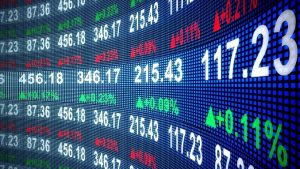As a newbie in the world of trading, I was eager to make my mark but hesitant to dive into the deep end of trading.
Faced with the daunting task of diving into the unpredictable waters of the financial markets, I knew I needed a safety net.
I needed a way to test the waters without risking my hard-earned cash. That’s when I discovered trading simulators that were like a playground for aspiring traders like myself.
In fact, after trying a couple of them, I quickly decided I needed to make a trading simulator myself. One that would be the friendliest way to learn trading and finance.
But let’s back up a few years, and let me tell you what I learned when I first started using trading simulators.
1) Dipping my Toes
As only my closest friends know, I love diving from great heights. I spent many Summers in Portugal when I was younger, and that’s when I first fell in love with it, seeing the locals do it.
Trading in the financial markets can feel a lot like that first step toward the pool’s edge.
So, picture this: you’re standing at the edge of a swimming pool, the water invitingly cool under the blazing sun. You’ve watched others dive in effortlessly, but as a beginner, the idea of taking that plunge feels daunting.
What if you belly flop? What if you get overwhelmed underwater? The fear of the unknown grips you tighter than your swim trunks.
The thought of risking your hard-earned money in the tumultuous world of stocks and currencies can be paralyzing, especially for beginners.
But just as swimming lessons provide a safe environment to learn, trading simulators offer a similar sanctuary for those dipping their toes into the world of trading.
Personally, it allowed me to experience the ups and downs of the market without the fear of losing real cash.
In the beginning, even making a small trade felt like a big deal. But as I spent more time practicing on the simulator, I started to feel more confident in my abilities.
I could test out different strategies, see how they played out in real time, and learn from my mistakes without any financial consequences.
2) Exploring What Works
I was eager to figure out what strategies would work best for me. But with that eagerness came a lot of stress. I mean, the idea of potentially losing money was enough to make anyone’s heart race.
That’s where trading simulators came in clutch. They gave me a stress-free environment to experiment with different trading approaches.
I could test out different strategies, from day trading to long-term investing, without the fear of losing money.
What I quickly discovered was that not every strategy was a winner. Some trades went south faster than I could blink, while others showed promising results.
But the beauty of using a simulator was that I could learn from both the successes and failures.
For example, I tried my hand at day trading, thinking I could make quick profits by buying and selling stocks within the same day.
But after a few failed attempts, I realized that it wasn’t my strong suit. Instead, I found success with a more conservative approach, focusing on long-term investments.
Ultimately, that freedom to explore without stress made all the difference. It gave me the confidence to eventually transition to live trading, knowing that I had a solid understanding of what to expect and how to navigate the unpredictable world of the stock market.
3) Building Discipline and Good Habits From the Ground up
When I first started trading, discipline and good habits weren’t exactly my strong suit. I mean, the idea of sticking to a trading plan and staying disciplined in the face of market volatility seemed easier said than done.
But that’s where trading simulators really came into play. They have a structured environment to build discipline and develop good habits from the ground up. Here’s how it went down:
1) Setting Goals
With a simulator, I could set specific trading goals and work towards achieving them without the pressure of real money on the line.
2) Following a Trading Plan
It’s easy to get caught up in the excitement of the market and deviate from your strategy. But with a simulator, I could practice executing my trading plan consistently, reinforcing good habits along the way.
3) Managing Emotions
Let’s face it: trading can be an emotional rollercoaster. Fear, greed, and FOMO can wreak havoc on your decision-making process.
However, by using a simulator, I could experience these emotions in a controlled environment and learn how to manage them effectively.
4) Reviewing and Analyzing Trades
After each trading session on the simulator, I made it a habit to review and analyze my trades.
I looked for patterns, identified areas for improvement, and adjusted my strategy accordingly. This habit of self-reflection was crucial in my journey to becoming a disciplined trader.
5) Staying Consistent
Consistency is also key in trading. Whether it’s sticking to your trading plan, managing risk, or executing trades, consistency is what separates successful traders from the rest.
By practicing, I developed the consistency needed to succeed in live trading.
4) Learning from Mistakes
We all make mistakes, and some mistakes we make are a great learning opportunity. That’s why, instead of beating myself up over them, I made a conscious effort to dissect each trade to understand what went awry.
Maybe I ignored a key technical indicator, got greedy and didn’t take profits when I should have, or let fear dictate my decision-making process.
By taking the time to analyze my mistakes, I could identify patterns and make adjustments to my trading strategy.
For example, if I noticed that I consistently lost money when trading a certain asset class, I would either avoid it altogether or spend more time studying its market dynamics.
Another valuable lesson I learned from my mistakes was the importance of risk management. Losing trades are inevitable in trading, but it’s how you manage those losses that sets you apart.
The stock market simulator allowed me to experiment with different risk management techniques. Things like setting stop-loss orders or scaling into positions gradually.
All in all, learning from mistakes on a trading simulator was instrumental in my growth as a trader. It taught me valuable lessons that I carry with me to this day.
Bottom Line
Trading simulators were like my practice field before hitting the big leagues of stock trading. They let me try out different moves, see what worked and what didn’t, all without risking any real cash.
Sure, it wasn’t exactly the same as real trading, but it gave me the confidence and skills I needed to take the plunge into live trading.
I’ve actually turned my passion for trading into a successful career. And along the way, I also saw the need for a trading simulator that really nailed the experience.
So, I decided to develop my own stock market trading simulator app. I wanted to create something that would help others learn the ropes and develop the skills they need to succeed in the market, just like simulators helped me when I was starting out.
It’s been a challenging journey, no doubt about it. But seeing the app in action and hearing from users who are benefiting from it makes it all worth it.
Plus, it’s pretty awesome to know that I’ve been able to give back to the trading community in such a meaningful way.





